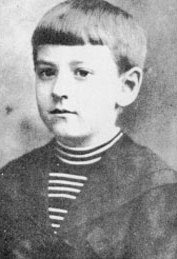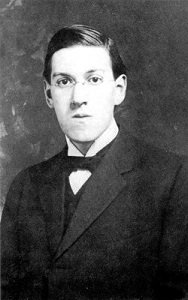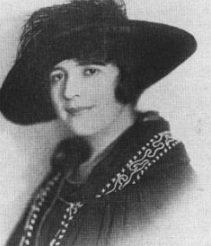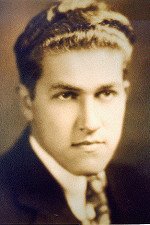HP Lovecraft and the Fear of the Unknown
It’s not quite true anymore to call Howard Phillips Lovecraft the “most influential horror writer you’ve never heard of”. While his work was once almost unknown, the internet’s endless appetite for obscure knowledge means that he’s a lot more high profile than he used to be. This is a double-edged sword, of course – now that’s he’s “cool”, people who like his work may rush to defend the man against comments on the worse side of his character. Though some aspects defy defence – most notably, his incredible personal racism.
There’s no real way to sugar-coat this. Lovecraft was incredibly racist, and that racism does influence his writing. In fact, he was more – he was a full-blown xenophobe, terrified of anyone or anything he perceived as different from himself. The fear of the unknown, and the unknowable, pervades Lovecraft’s work just as the dark depression of Edgar Allan Poe pervaded his. It wasn’t just the different Lovecraft was afraid of. In 1893, when he was three, his father had to be committed to the psychiatric hospital in Providence. He died there five years later. Lovecraft feared that this meant he too was mentally unstable – a fear that also permeates his work, with ancestral curses and unknown inheritance dooming his protagonists. Another of his fears also haunted him from childhood – Lovecraft suffered from a sleep disorder, one which led him to feel like monsters were attacking him as he slept. These shadowy half-formed horrors also became a recurring theme in his stories.

With his father out of the picture, Lovecraft was raised by his mother, his maternal grandfather, and two maiden aunts. His grandfather, Whipple van Buren Phillips, was the owner of a successful construction company – until two dams built by his company burst, and the associated fines drove him out of business. He died in 1904, but he had a great influence on his grandson by introducing him to classical fantastic literature, such as Arabian Nights. Another big influence on Lovecraft was his limited social circle. He suffered from poor health his entire life, and as a result, he was homeschooled until he was 14 with only his family for company. When he was 14 he did attend school, but wound up too unwell to graduate with his high school diploma. Following this, he returned to isolation, living with his mother and writing poetry. [1]
In 1913 Lovecraft wrote a letter to the editor of The Argosy, a pulp magazine (in fact, the first of the American pulp magazines) which was aimed at adults and contained stories from a wide range of genres. It was the romance stories which had offended Lovecraft – not for their content, but for their lack of craft. Letter writing was one of Lovecraft’s great skills, and the ensuing back and forth between him and other readers in the magazine’s letter page gained him an invitation to the United Amateur Press Association, an early precursor of the modern fanzine movement. It was they who first published his work in 1916 – The Alchemist, a story about a family doomed by a curse placed on one of their ancestors.

As a result of his involvement in the UAPA, Lovecraft soon began to correspond with other writers and aspiring writers around the country, and wound up the central point in a network of horror writers that included such luminaries as Robert E Howard (creator of Conan the Barbarian), Robert Bloch (author of Psycho) and Fritz Leiber (generally regarded as the creator of the heroic fantasy genre). In 1919 his circle of correspondents gained a new and tragic member – his mother, who suffered a nervous breakdown and was committed to the very same hospital where her husband had died. She continued to write to Lovecraft over the next two years, until she died in 1921. A few days later, Lovecraft went to Boston to attend a convention of amateur writers, where he wound up meeting the new central woman in his life. A milliner named Sonia Greene.
From the outside, the romance between Sonia Greene and Lovecraft seemed very improbable. She was seven years his senior and Jewish by birth, while he was (of course) hugely antisemitic. [2] She had been born in the Ukraine, and was a widow with a nineteen year old daughter. Still the two shared an interest in writing horror, and Lovecraft helped her revise some of her stories. His first commercially published work came in 1922, hers in 1923, and in 1924 they were married.
1924 was also the year that Lovecraft completed his most successful story to date, Imprisoned with the Pharaohs. It was published to great acclaim, though this may have been partially due to it having not Lovecraft’s name as author but rather that of its protagonist, Harry Houdini. Though Lovecraft didn’t gain public credit for the work it still enormously boosted his standing among those “in the know”, and Houdini became a valuable contact for him professionally. Lovecraft was never really successful in his lifetime, but what success he gained came from that initial connection.

The married couple lived in New York – Lovecraft had lived in Providence his whole life, and Sonia thought that he needed to get away. Here he actually developed a social circle of other writers, though it’s generally agreed that he was completely unaware that a lot of his friends, including his closest friend Samuel Loveman, were homosexuals. Loveman [3] was also Jewish, and he in turn was unaware of Lovecraft’s antisemitism until after his death. Lovecraft did have trouble coping with the diverse nature of life in New York. Sonia later wrote:
Whenever we found ourselves in the racially mixed crowds which characterize New York, Howard would become livid with rage. He seemed almost to lose his mind.
Life was hard for the couple – Sonia’s business failed, and when Lovecraft couldn’t find work due to his lack of any marketable skills, she left New York and travelled to Cleveland to work. On his own Lovecraft continued to despise the city, something that is clearly evident when he destroyed (in fictional form) the neighbourhood where he lived in The Horror in Red Hook. He was offered the job of editing Weird Tales but declined, perversely because it would have meant leaving New York for Chicago. In his absence the job went to Farnsworth Wright. While Wright did publish Lovecraft’s work he rejected two of his longer pieces in 1931 – The Shadow over Innsmouth and At the Mountains of Madness. Nowadays these are regarded as among Lovecraft’s best work, but Wright thought they were too long and flowed too poorly for the magazine. Their rejection sent Lovecraft into a spiralling depression.
By this point Lovecraft had returned to Providence – in fact he left in 1926, which is around when his long-distance marriage also began to break down. In the late 1920s they divorced amicably – though since Lovecraft never actually filed the correct paperwork, the divorce was never technically legal. Back in Providence, he lived with his aunt, the only surviving member of his family. Sometimes his work sold, but often it did not. He was unwilling to write to the market, and while this led to him becoming more and more impoverished it;’s also what let him produce his most interesting work. Academics usually divide Lovecraft’s work into three phases, though they overlap to a huge degree. His early work is clearly heavily inspired by Edgar Allan Poe’s dark and overwrought Gothic work. His next phase is more centred around adventures in the world of dreams, and was clearly influenced by writers such as Lord Dunsany [4] and Robert Chambers [5]. This is his most optimistic period, and is often tied to his early days in New York. From these influences Lovecraft synthesised his own world of horror – what became known as the Cthulhu Mythos.

The Cthulhu Mythos [6] takes its name from Lovecraft’s most famous creation, the ancient evil at the heart of his novella The Call of Cthulhu. In this story artists around the world begin to create sculptures and drawings of a hideous monstrosity with a tentacled face and bat wings, while the police are forced to fight a resurgent ancient cult that believes their master is returning to reclaim the world.
“That is not dead which can eternal lie,
And with strange aeons even death may die.”
The themes of cosmic horror, of incomprehensible intelligence, of unknowable alienation – these came to be the central themes of Lovecraft’s work. His stories began to take place in a shared world, one where the ancient horrors that once ruled the universe now slept, but sometimes stirred. Ancient Azathoth, the god of chaos. Nyarlathotep, the dark messenger. Yog-Sothoth, the opener of the way. And “when the stars are right” they would come again. Other writers in his correspondence too began to put figures from the Mythos into their work, and Lovecraft referenced theirs in his, creating a true shared universe. Even nowadays writers (and creators of video games and roleplaying games) still set their works in the Mythos universe.

Lovecraft was always short of money in his final years, and when he contracted intestinal cancer in 1937 he soon passed away. After his death his sometime protege, August Derleth, inherited his papers. These included a large number of unpublished stories, among them The Dunwich Horror and an entire unpublished novel, The Case Of Charles Dexter Ward. In his later depression Lovecraft had often shelved a story after a single rejection, or not even submitted it at all. Derleth became an evangelist for Lovecraft’s work – though he was not above taking a brief outline or fragment from the papers, writing a story based on it and then publishing it as a “collaboration” between him and Lovecraft. Still, his efforts helped to keep Lovecraft in print and known, and he soon became “the horror writer’s horror writer”, a good go-to obscure reference and inspiration for a unique flavour of horror.
It was the 1990s when Lovecraft began to experience a renaissance. High profile fans began to reference his works. Artists like Metallica mined his stories for lyrical inspiration. Stephen King, an avowed fan, declared him “the 20th century horror story’s dark and baroque prince”. This became the cover quote for a reprinting of his works in 1987 that remained in print up to the present day. The roleplaying game world too played a huge part in bringing Lovecraft back into focus – the RPG Call of Cthulhu was for many (including myself) a first introduction to the world of the Mythos, and helped to drive home just how different it was from the staid horror traditions that drove the mainstream at the time.

Nowadays, as I mentioned, Lovecraft is far from obscure. The internet loved the Mythos – the early pioneers of the space were often fans of the arcane and the strange, and one of the earliest proto-meme websites was Cthulhu For President. “Why choose the lesser of two evils?” As geek culture continued to push into the mainstream, so the Mythos became less and less about horror, and more about being part of the Obscure Reference Club – invoked in novels, videogames, TV shows, movies, board games…the list goes on. Yet despite that (or perhaps, because of it) the original stories still stand as a unique body of work – often imitated, but rarely equalled. Perhaps it’s simply because nobody else ever had as much fear – of strangers, of other races and beliefs, even of themselves – as Howard Phillips Lovecraft.
Images via wikimedia except where stated. Banner via Den of Geek.
[1] One of the most notorious of these, written in 1912, is a hideously racist piece of doggerel that gives an appalling (and blasphemous) explanation for the existence of black people.
[2] Sonia had largely abandoned her Jewish heritage, however, and Lovecraft would sometimes point to this as “proof” that foreigners could become “civilised”.
[3] Yes, that’s really his name.
[4] An Irish aristocrat who wrote colourful prose about fairly nasty fairies.
[5] Author of the King in Yellow stories, which had a recent surge of popularity when they were referenced on True Detective’s first season.
[6] Kuh-thool-hu.

